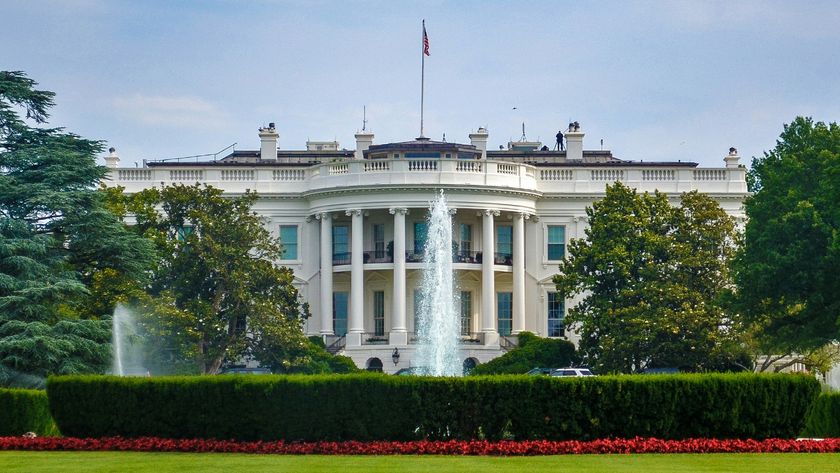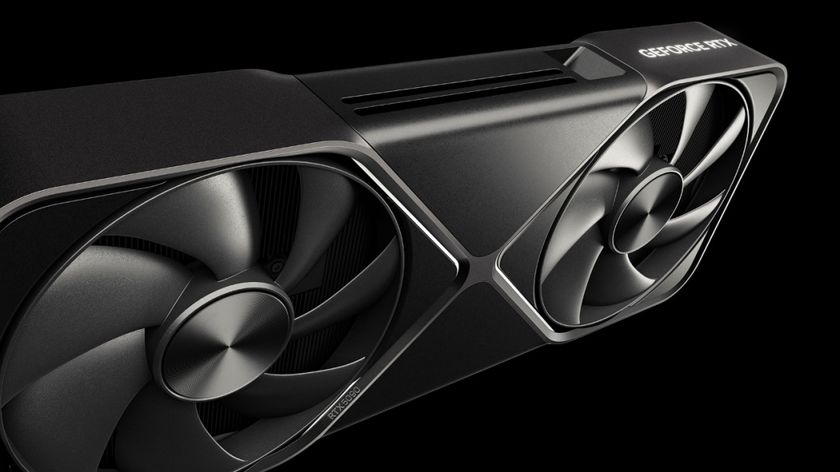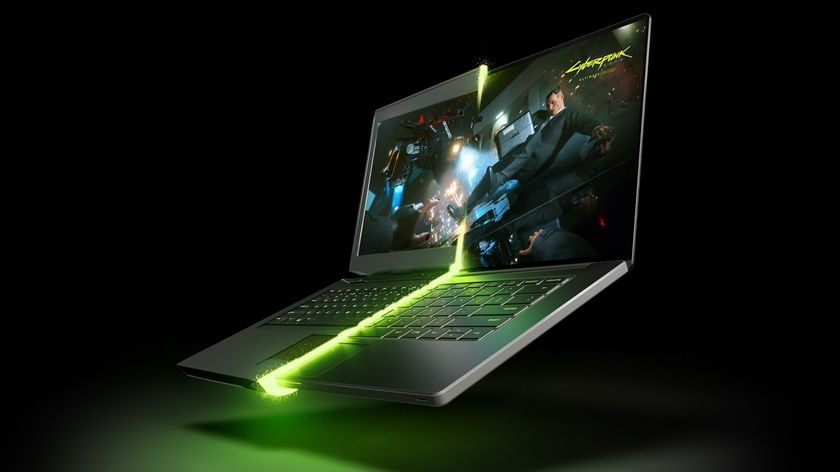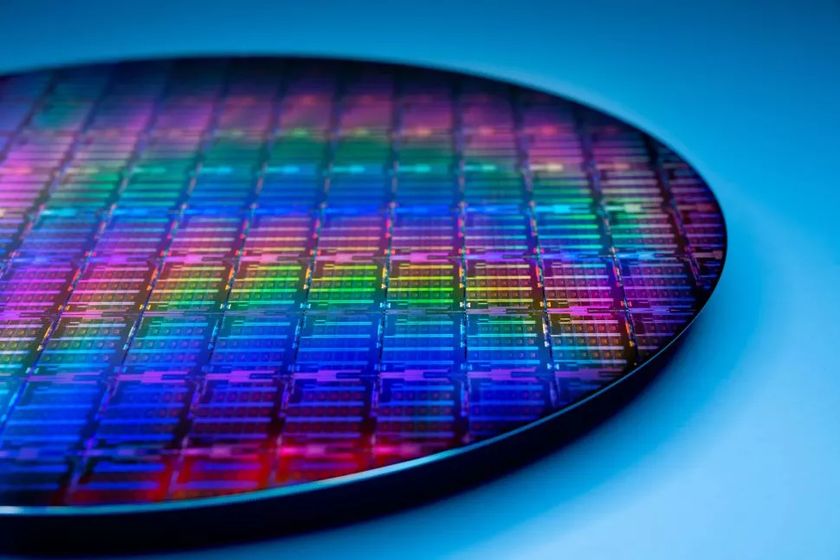MSFT Talks Windows 8, TV Interaction During CES Keynote
Microsoft crammed an interview, demos of Windows Phone, Windows 8 and Xbox with Kinect into one action-packed hour.
On Monday, President and CEO of the Consumer Electronics Association Gary Shapiro (who could easily be played by SNL's Chris Kattan in a made-for-TV movie) opened the CES 2012 Keynote Address with an explanation as to why Microsoft is pulling out of the show. Technically he called it "taking a break," and admitted that both parties agreed it was time for Microsoft to do something else, something bigger. Hence, Shapiro set the tone of the entire keynote address, a retrospective of what Microsoft has brought to the show for more than a decade, to what the company is doing now.
To be perfectly honest, this wasn't the best way for Microsoft to "go out with a bang." The company clearly wowed all of us last year when Windows was revealed to run on ARM's architecture. That same wow factor wasn't present this year. Instead, Microsoft's final keynote -- at least for now -- was presented in the form of a one-on-one interview between American Idol's Ryan Seacrest and Microsoft CEO Steve Ballmer. The entire dialogue exchange came across as a scripted, hokey, late-night infomercial, with the product presenter (Ballmer) spewing off obviously prepared answers as the "host" (Seacrest) merely did the "gosh gee golly" while holding up said products or firing off brief, scripted questions.
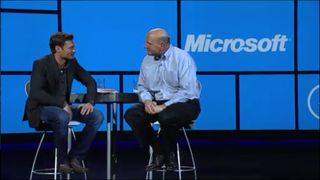
The keynote itself was broken down into three sections -- Windows Phone, Windows 8 and Xbox -- but the overall theme revolved around Metro. It's Microsoft's answer to the "sea of icons" littering most non-Microsoft smartphones today (namely iOS and Android) by replacing the apps with personal information. Out are the icons and in are the blocky panels revealing what your friends are tweeting, who has the next birthday, who just sent an email and more. Metro is more personal, making the experience about the actual user instead of the device, and it's now spreading across the three faces of Microsoft: mobile, desktop, and living room.
The first segment of the keynote -- the Windows Phone presentation -- focused on that very aspect: how Windows Phone "puts people first." Derek Snyder, senior product manager of Windows Phone, actually came out on stage and demoed the OS features. To amplify the present focus on personalization, he dived straight into the People hub, showing how he separated friends, family, and business associates into groups. He also demonstrated Contact Cards that actually show what the contact tweets, and allows the user to re-tweet the post without loading a standalone app. It also keeps track of every conversation that takes place between the user and contact; whether it's Facebook chats, emails, texts or instant messages, they're all compiled into a Thread.
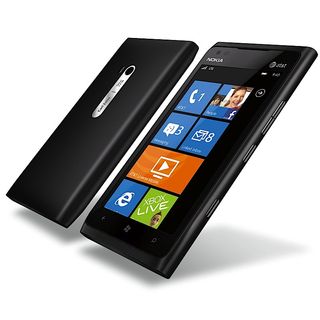
The next product in the keynote presentation was Windows 8. This is where everything got interesting, showing the audience how users can interact with the Metro-themed OS. However Ballmer first provided a video highlighting new Windows 7 machines including the Sony Vaio Z, the Asus Zenbook UX21, the Acer Aspire S3, the Toshiba Portege Z830, the Dell XPS 14z, the Lenovo IdeaPad U300s, the Samsung Series 9, and the HP Envy 14 Spectre. They all looked utterly hot and sexy in the diffused lighting, and will be prime candidates for Windows 8 when the beta launches in February.
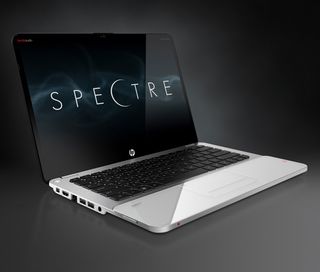
After the clip, Chief Marketing Officer of Windows Tami Reller came out on stage and presented a demo of Windows 8. "Windows 8 is more than the next version of Windows," she said. "It's a new way of thinking about your PC." It's Windows re-imagined, she went on to say, and backed up her claim by grabbing a Windows 8 tablet running Nvidia's Tegra 3 SoC, and explaining the new features displayed on the lock screen. Without unlocking the device, users can see that they have new email, new instant messages, appointments and other notifications. Consumers can even use a picture as a password, touching specific items within the image instead of typing a PIN or an actual alpha numeric password.
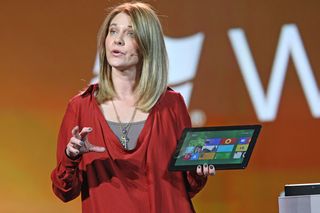
The main "Start" screen features the Metro UI that can be panned from left to right. Instead of app icons, there are tiles that provide information from the installed apps without the need for actually launching them -- they are live, and they are always up to date. A hidden toolbar is located on the right side of the screen, tucked away from view until the user moves the mouse to that region or swipes in from the right edge, depending on the device. This toolbar contains what she called "Charms," but the icons clearly read Search, Share, Start, Devices and Settings. "Charms are going to connect your app to other apps," she explained. "They're going to connect to your friends, and connect your app to your devices. Charms provides access to key Windows features."
Stay On the Cutting Edge: Get the Tom's Hardware Newsletter
Get Tom's Hardware's best news and in-depth reviews, straight to your inbox.
Tami went on to show off a Samsung tablet using Intel's Core i5 processor, and explained that Metro app developers have the ability to write one app that will run on both ARM and x86-based hardware. They're also developed to support both touch and mouse/keyboard setups, meaning one app can work on an ARM-based tablet and a x86-based desktop without the need for separate versions -- nope, no fragmentation here. These apps can be purchased and downloaded directly from the Store embedded within Windows 8 -- a storefront that will initially launch globally in late February with a batch of free apps.
After wrapping up the Windows 8 demonstration, Microsoft rolled out the Tweet Choir which sang various tweets that supposedly went live during the first two segments of the keynote. Like the whole fake one-on-one interview, attendees could have done without the silliness in favor of more Windows 8 talk. But eventually the Seacrest/Ballmer interview resumed, introducing the Xbox segment of the show. Initially they talked about getting into the console business, with Ballmer presenting an over-the-top retelling with fists flying and mouth snarling. Ten years later Microsoft is now sitting pretty atop a mountain of subscribers and sales figures, a bet that apparently paid off as Ballmer reportedly predicted all those years ago. He mentioned that in the last few years, consumers have purchased the console for family entertainment, and in the last few weeks their focus has been on the entertainment hub aspect with the introduction of the updated Metro-themed UI and LIVE TV.
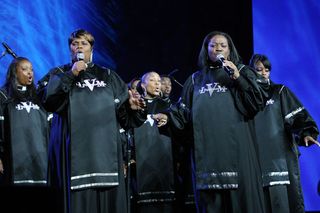
Initially, the keynote presented nothing we haven't already seen. Ballmer began talking about using Kinect to make interaction with multimedia extremely easy. To demonstrate the voice-controlled aspect, Greg Davidson from the Xbox team came out on stage and explained that the user's voice is the only controller they'll need -- as long as they actually own the Kinect, of course. "Now with Bing, you say it, and Xbox finds it," he said after uttering commands like Games, Movies and Music to switch from one Metro-themed section to another. He even demoed the search function, stating, "Xbox, Bing Star Trek." In response, the console pulled up panels of Star Trek-related media like the old TV series, Star Trek IV: The Voyage Home and even the latest 2009 flick.
After the Bing search demo, Davidson went on to talk about TV programming. Verizon and Comcast have already signed up to pipe in fresh content, but Davidson also said that News Corporation is now a partner, providing content from FOX, the Wall Street Journal, FOX News Channels and IGN. The News Corp app will launch sometime in 2012, granting On Demand access to favorites like Family Guy, Fringe and Glee. But that's just the tip of the iceberg. For now you simply watch the TV, but soon you'll actually engage with the TV. To explain how this will work, Davidson's colleague Jamie Bower came on stage to reveal the Xbox's interactive future.
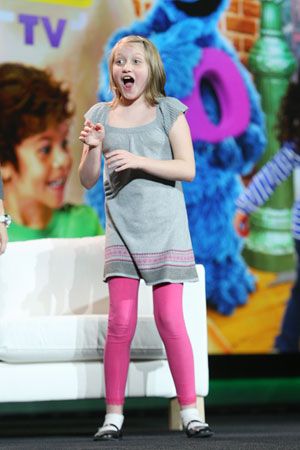
The two-way TV demonstration began with current episodes of Sesame Street. "For the first time, you can physically and vocally impact a TV show," she promised. At one point Grover dropped a box of coconuts and asked the viewer to pick them up (what, you don't have hands, you furry blue muppet?). A little girl Bower brought out on stage stood up and tossed the coconuts back into the box via actual hand and arm movements tracked by Kinect. When the girl refused to pick up a coconut, Cookie Monster came in and cleaned up the mess for her. The girl finally threw the final coconut, but virtually launched it far up into the air, forcing Grover to look up and step back in order to capture the flying fruit without getting knocked in the head.
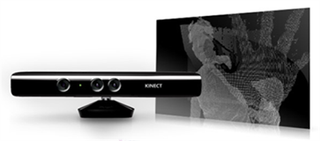
Following the Kinect Sesame Street TV demo, Ballmer whipped out another video, this time showing examples of what Kinect is currently doing outside the gaming arena. The video asks, what's next for Kinect? Ballmer had the answer, announcing that the device is heading to Windows on February 1. "We're already working with more than 200 companies on unique Kinect for Windows applications," he said. "The breadth of what they're doing is mind-blowing. From United Health Group, Toyota, Telefonica, Mattel, American Express, and many, many more. "
With that out of the bag, it seemed that there was nothing left to offer in the keynote address given that only a couple of minutes were left. But Ballmer briefly talked about acquiring Skype, pushing Office into the cloud, working with Yahoo and Facebook, and more. Yet what's next for Microsoft? Windows 8, plain and simple.
"Together, all of us, in this industry, in thousands of new ways, even new ways we haven't imagined yet, will use this software, services and devices to invent incredible things," Ballmer said. "Metro will drive the new magic across all of our user experiences. In the new math at Microsoft, Metro means that one plus one really does equal three."
"So in 2012, what's next? " he added, leaning forward and literally pushing Seacrest back in his seat. "Metro Metro METRO! And of course, Windows Windows WINDOWS!"
Ballmer had raised a fist by this point, seemingly ending Microsoft's long run with CES with his trademark fist of fury. Go get 'em, tiger.
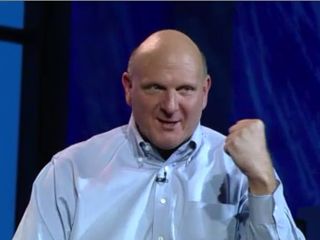
-
gmarsack Seacrest OUT! The interview would have much more interesting if Kattan was there asking the questions... can you imagine? :)Reply -
freggo No matter who is doing the 'interview' you know it is basically a screenplay that's being performed; only the actors are not that good. They should hire Brad Pitt or George Clooney. At least that way there is some eye candy in the whole story :-)Reply
-
rawfulThat last picture is kind of scary.That's nothing scary, that is Ballmer and he's no wimp. He's gonna stomp all over them wimpy latte drinkers down at Starbucks.Reply
-
NightLight am i the only one here that's excited about the things to come?Reply
i'm not scared of the new win8 ui, i tend to give it a fair chance.
as for the new xbox, i expect they have learned from their mistakes (rrod mainly in the first gen)
and just bring a new version that integrates as a total package with win 8 and tv's.
I think kinect is a winner, and will develop further, in many applications.
My 2 cents
-
JOSHSKORN gmarsackSeacrest OUT! The interview would have much more interesting if Kattan was there asking the questions... can you imagine?You mean, Microsoft OUT!Reply
